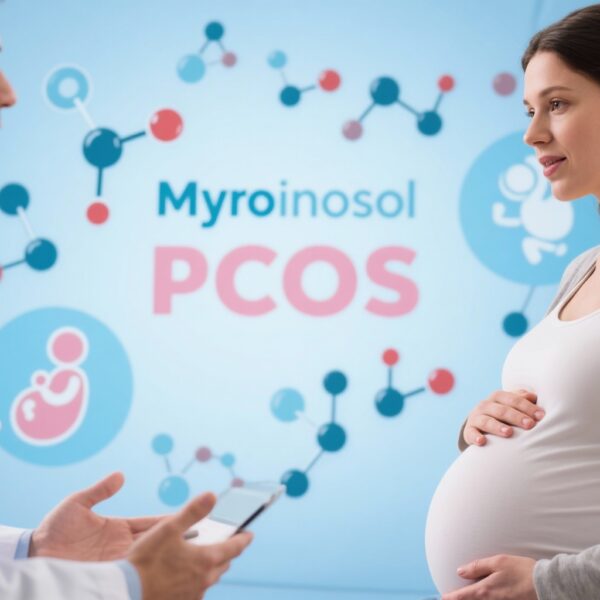Highlight
- The large multicenter BiB trial tested early intratracheal budesonide combined with surfactant against surfactant alone in extremely preterm infants.
- The intervention did not reduce the incidence of physiologic bronchopulmonary dysplasia (BPD) or death at 36 weeks postmenstrual age.
- No difference was observed in mortality rates or BPD among survivors between groups.
- Higher incidence of hyperglycemia was noted in the group receiving budesonide plus surfactant compared to surfactant alone.
Study Background
Bronchopulmonary dysplasia (BPD) remains a formidable challenge in neonatal care, especially affecting extremely preterm infants born at or before 28 weeks’ gestation or weighing less than 1000 grams. Characterized by arrested lung development and chronic pulmonary inflammation, BPD leads to prolonged respiratory support requirements and carries long-term morbidity risks including impaired lung function and neurodevelopmental impairment. Despite advances in neonatal intensive care, BPD incidence remains high, and mortality is significant.
Systemic corticosteroids have been used to modulate pulmonary inflammation, but their side effects discourage widespread early use. Intratracheal administration of corticosteroids like budesonide mixed with surfactant offers a targeted approach with potentially less systemic exposure. Smaller-scale randomized trials indicated that budesonide plus surfactant might reduce the composite outcome of BPD or death. However, these studies were limited by sample size and heterogeneity.
Study Design
The Budesonide in Babies (BiB) trial was a rigorously designed, double-masked randomized clinical trial conducted between April 2021 and June 2024 across 17 centers in the United States Neonatal Research Network. Eligible infants were extremely preterm (22 to 28 weeks’ gestation) or with birth weight between 401 and 1000 grams, enrolled after the clinical decision to administer their first dose of surfactant. Infants who had previously received surfactant were excluded.
Participants were randomized 1:1 to receive either one to two doses of budesonide (0.25 mg/kg) mixed with poractant alfa surfactant or surfactant alone. Administration was via endotracheal tube within 50 hours of birth. The primary outcome measured was a composite of physiologic BPD or death at 36 weeks’ postmenstrual age. Several secondary and exploratory outcomes, including safety parameters, were prespecified.
Key Findings
The trial enrolled 641 infants before early stopping due to futility at the interim analysis (55.3% of the planned 1160 enrollment). The mean birth weight was 810 grams (SD 256 g), and mean gestational age was 25.9 weeks (SD 1.9 weeks).
The incidence of BPD or death was virtually identical between the budesonide plus surfactant group (68.5%) and the surfactant-alone group (67.9%), yielding an adjusted relative risk (RR) of 1.00 (95% confidence interval [CI], 0.90–1.11). Mortality rates did not differ significantly (15.3% vs 13.2%; adjusted RR, 1.13 [95% CI, 0.78–1.64]). Among survivors to 36 weeks postmenstrual age, BPD prevalence was also comparable (62.9% vs 63.0%; adjusted RR, 0.99 [95% CI, 0.87–1.12]).
Regarding safety, a notable finding was a higher incidence of hyperglycemia in infants who received budesonide plus surfactant (66.7%) compared to surfactant alone (49.8%), with an adjusted RR of 1.33 (95% CI, 1.17–1.51). Other safety outcomes were not detailed but are critical for interpretation.
Expert Commentary
The BiB trial provides high-quality evidence that early intratracheal administration of budesonide combined with surfactant does not confer benefits in reducing physiologic BPD or death in extremely preterm infants, contrasting with previous smaller studies suggesting potential benefit. The robust sample size and multicenter design strengthen the validity and generalizability of these findings.
The lack of efficacy may reflect the complex pathophysiology of BPD, in which inflammatory modulation alone, even targeted intratracheally, may be insufficient or require different timing, dosage, or patient selection. Additionally, the increased risk of hyperglycemia highlights potential systemic corticosteroid effects, underlining the need to carefully weigh risks and benefits.
Limitations to consider include the premature termination reducing sample size and statistical power to detect smaller effect sizes, and the singular dosing regimen tested. Future investigations might explore alternative corticosteroid agents, dosing schedules, or combination therapies.
Conclusion
In conclusion, the BiB randomized clinical trial definitively demonstrates that early intratracheal administration of budesonide mixed with surfactant does not reduce the incidence of bronchopulmonary dysplasia or death by 36 weeks’ postmenstrual age in extremely preterm infants. While prior smaller studies indicated promise, this larger and methodologically rigorous trial does not support routine clinical use of budesonide in this manner.
Clinicians should continue to focus on comprehensive respiratory management strategies and anticipate emerging evidence to further refine BPD prevention and treatment approaches. Safety concerns such as hyperglycemia also warrant vigilance when corticosteroid therapies are considered in fragile preterm populations.
References
Ambalavanan N, Carlo WA, Nowak KJ, Wiener LE, Cosby SS, Bhatt AJ, Watterberg KL, Poindexter BB, Keszler M, D’Angio CT, Brion LP, Narendran V, Rau CA, Cotten CM, Laughon MM, Das A, Rysavy MA, Hibbs AM, Fuller J, Puopolo KM, Katheria A, Patel RM, Bermick JR, Laptook AR, Prelipcean I, Wyckoff MH, Moore R, Merhar SL, Ohls RK, Yoder BA, Perez M, Ghavam S, Meyer LR, Chock VY, DeMauro SB, Jackson WM, Handa D, Walsh MC; National Institute of Child Health and Human Development Neonatal Research Network. Early Intratracheal Budesonide to Reduce Bronchopulmonary Dysplasia in Extremely Preterm Infants: The Budesonide in Babies (BiB) Randomized Clinical Trial. JAMA. 2025 Sep 30:e2516450. doi: 10.1001/jama.2025.16450. Epub ahead of print. PMID: 41026481; PMCID: PMC12486137.
ClinicalTrials.gov Identifier: NCT04545866.


